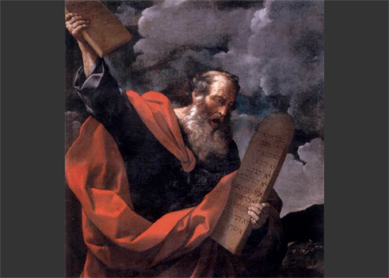The ark of the covenant is perhaps the most famous object from the Hebrew Bible, due to its starring role in Steven Spielberg’s film Indiana Jones and the Raiders of the Lost Ark (1981). Indiana Jones seems to know exactly what the ark is supposed to look like. But the Bible contains two very different physical descriptions of this object. In
In the movie, Indiana Jones is warned about the ark: “Death has always surrounded it. It is not of this earth.” In the biblical accounts, the ark is indeed a dangerous object that was constructed according to divine blueprints. It is intimately associated with the divine presence. Yahweh speaks with Moses from between the outstretched wings of its cherubim (
In the book of Joshua, the ark is portrayed as a locus of fearsome divine power. Through it, Yahweh performs wonders that allow the Israelites to take over territory after years of desert wandering. When the feet of the priests who carry the ark touch the Jordan River, its rushing waters stand still so that the Israelites can cross over and enter the land of Canaan (
The ark plays a prominent—and largely destructive—role within the narratives of 1-2 Samuel, where it is referred to by the title “the ark of the covenant of the Lord of hosts, who is enthroned on the cherubim” (
When King David establishes Jerusalem as his capital, he is determined to secure the presence of the ark in his city, even after Uzzah is killed when he reaches out his hand to steady the ark in the process of transporting it (
Bibliography
- Haran, Menahem. “The Disappearance of the Ark.” Israel Exploration Journal 13 (1963): 46–58.
- Wright, David P. “Music and Dance in 2 Samuel 6.” Journal of Biblical Literature 121/2 (2002): 201–25.
- Anderson, Gary A. “Towards a Theology of the Tabernacle and Its Furniture.” Pages 161–94 in Text, Thought, and Practice in Qumran and Early Christianity. Edited by Ruth Clements and Daniel R. Schwartz. Leiden: Brill, 2009.





